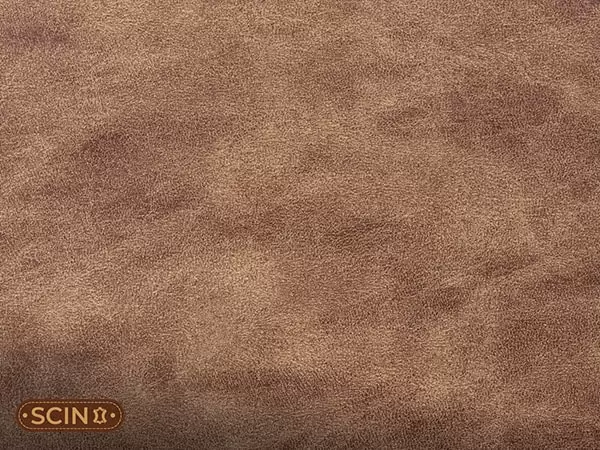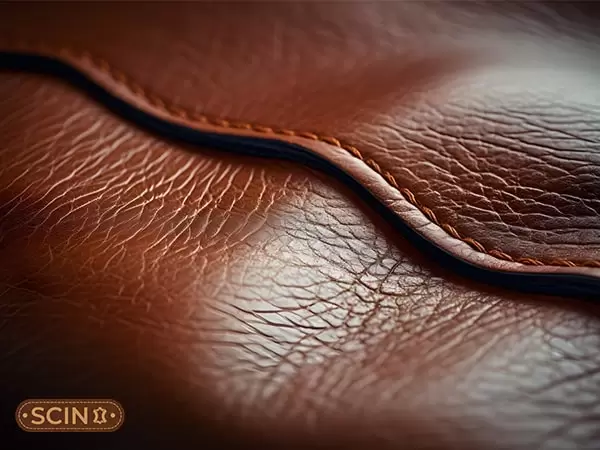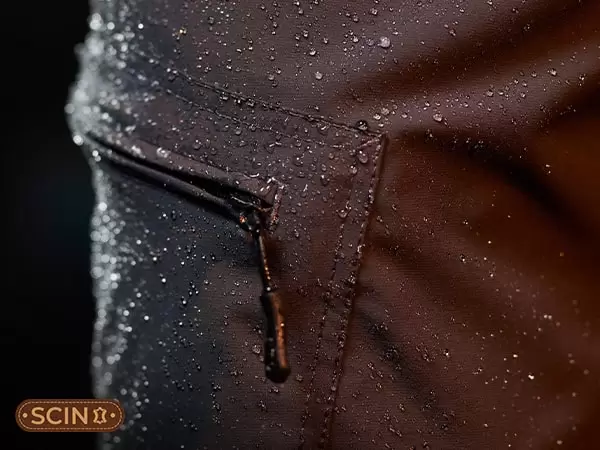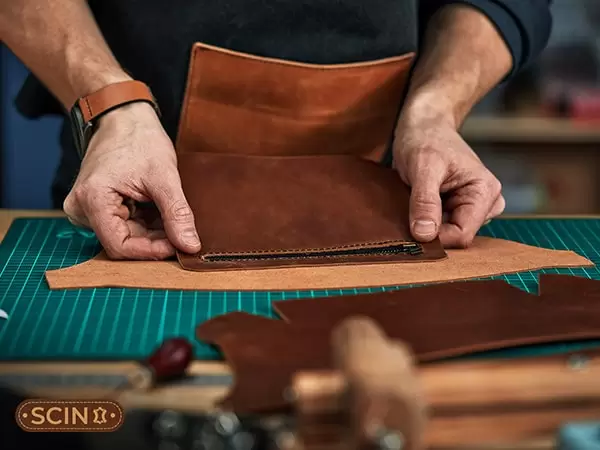Leather is a special material that people treasure just because it is strong and lasts a long time. You can find it in many things we use daily, like shoes, bags, and jackets, where its toughness and classic appearance shine. However, its story goes way back in time, woven into human history as a reliable and versatile resource. What makes it stand out is the different types of leather and how each ages differently, gaining more character.
When we think about leather, we often think about its unique texture, how smooth it feels, or the rich smell that comes with it. These characteristics can vary a lot depending on the types of leather and how each is treated. Each different kinds of leather comes from different parts of animal hides and is processed in specific ways to achieve different qualities. So, let’s dive deeper and learn more about each of the leather types.
What Are The Different Types of Leather?
Leather is a popular material used in many products like shoes, bags, and furniture. It comes in various types, each with its own unique features and qualities. Understanding the differences between these types of leather can help you make smart choices when buying leather goods. Whether we’re looking for something tough, soft, or stylish, knowing about these leather variations helps us pick the right kind of leather. Exploring the five main types of leather gives us a deeper look into their special qualities and where they work best. This knowledge helps us appreciate leather’s diversity and choose products that match our needs and tastes perfectly. Now, let’s look deeper into the main types of leather and what makes each one of them special.
Full Grain Leather
Full-grain leather is the best quality leather you can find. It is known as real leather, comes from the top layer of the animal hide and includes all the natural grain. This type of leather is very strong and durable. It can last for many years and gets better with age. Full-grain leather shows the natural marks and imperfections of the hide, which gives it a unique look.

Over time, it develops a patina, which is a soft shine that makes it look even more beautiful. People use full-grain leather to make high-quality products like bags, shoes, and furniture as it is so durable, but it is more expensive than other types of leather as well.

Top Grain Leather
Top-grain leather is the second-highest quality leather. However, it is also known as real leather but is made by sanding away the natural grain from the top layer of the animal hide. This process removes imperfections and makes the leather smoother and more flexible. Top-grain leather is known to be strong yet it is not as durable as full-grain leather. It doesn’t develop a patina, but it is easier to clean and maintain.
This type of leather is often used in high-end products like handbags, wallets, and jackets. It is also less expensive than full-grain leather, making it a popular choice for many people.
Nubuck Leather
Nubuck leather is a type of top-grain leather. It is made by sanding or buffing the outer side of the hide, which gives it a soft, velvety feel. Nubuck leather is strong and durable, but it is more sensitive to stains and water. This type of leather is often used in shoes, jackets, and furniture. It is luxurious in look and feel yet it needs special care to maintain it.

You can use a special brush to clean nubuck leather and a protective spray to help resist stains and water.

Suede Leather
Suede leather is made using the underside of animal hide. It has a soft, fuzzy texture and is less durable than other types of leather. Suede is very flexible and comfortable to wear, making it popular for shoes, jackets, and accessories. However, suede can easily get dirty and is not very water-resistant. To care for suede leather, you should use a special brush to remove dirt and a protective spray to help keep it clean and dry.
Suede leather looks and feels nice but needs careful handling to last a long time.
Genuine Leather
Genuine leather is a type of leather that is of lower quality than full-grain and top-grain. It is made from the layers of the hide that are left after the top layers are removed. Genuine leather is still real leather, but it is not as strong or durable as higher-quality types. It is often used in making products like belts, wallets, and bags. Genuine leather can look good and last for a while.

However, it may not age as well as full-grain or top-grain leather. It is a more affordable option for people who want real leather without paying a high price.

Bonded Leather
Bonded leather is made from scraps of leather that are left over from other products. These scraps are grinded and mixed using a bonding agent. Then, they are pressed together into a sheet of leather. It is the least durable type of leather. It can look and feel like higher-quality leather, but it does not last as long. Bonded leather is often used in furniture, book covers, and accessories.
It is much cheaper than other types of leather, making it a budget-friendly option. However, it may start to peel or crack over time, especially with heavy use.
Faux Leather
Faux leather, also known as synthetic leather, is not made from animal hide. Instead, it is made from plastic materials like polyurethane (PU) or polyvinyl chloride (PVC). Faux leather looks and feels similar to real leather but is usually less expensive, more water-resistant, and easy to clean. Faux leather is often used in furniture, car seats, and fashion items like jackets and bags.

Since it does not come from animals, it is a popular choice for people who prefer cruelty-free products. However, faux leather is not as durable as real leather and may not age as well.
Easy-to-Follow Steps to Identify Leather at Home
If you are unsure about the types of leather material of a product, you can perform a simple test to get a better idea. Keep in mind that these methods are not foolproof but can provide some insights:

Look for Labels
Check the product for labels that state the type of leather used. Tags in high-quality leather products often specify whether they consist of full-grain, top-grain, or genuine leather.
Smell the Leather
Genuine leather has a unique and pleasant aroma that is often absent in others. If your product has a strong chemical or plastic smell, it is likely made from faux leather.
Examine the Grain and Texture
Real leather has a unique grain pattern that is irregular and unique. Thus, examine the surface closely for natural marks, wrinkles, and pores. However, if the surface appears too uniform and lacks roughness, it may be another kind of leather.
Check for Consistency
Genuine leather and real leather will have various colors and textures. However, if the product has a uniform appearance throughout, it may be a lower-quality.
Feel the Texture
Real leather is soft and supple, while others may feel stiffer and less flexible. So, run your fingers over the surface and pay attention to how the material feels to your touch.

Scientific Methods to Identify Leather
For those seeking a more precise approach to identifying different types of leather, here are some methods that involve chemical testing. Do keep in mind that these tests may require a small, hidden area to sample first. So use caution and perform them on an area that won’t be visible.

Water Drop Test
Place a small drop of water on the surface of the leather. Genuine leather will absorb the water, while faux leather or heavily treated leather may repel it. However, this test may not be foolproof, as some treated types of leather can also absorb water.
Heat Test:
Hold a small, hidden section of the leather close to a flame for a few seconds. Genuine leather will resist the flame and may produce a distinct smell. Whereas faux leather, on the other hand, will often melt or burn with a plastic odor.


Chemical Test:
Apply a small amount of a mild, colorless liquid, such as rubbing alcohol, to a hidden area of the leather. This will not affect genuine leather, but faux leather may show signs of discoloration or damage.
Scratch Test:
Genuine leather is more resistant to scratches, and any marks can often be rubbed away. However, faux leather, being softer, may show permanent scratches. Remember to perform this test in a hidden area to avoid visible damage.


Examine the Back Side:
If possible, examine the back side of the leather product. Real leather will have a rougher, unfinished back, while faux leather may have a more uniform and fabric-like appearance.